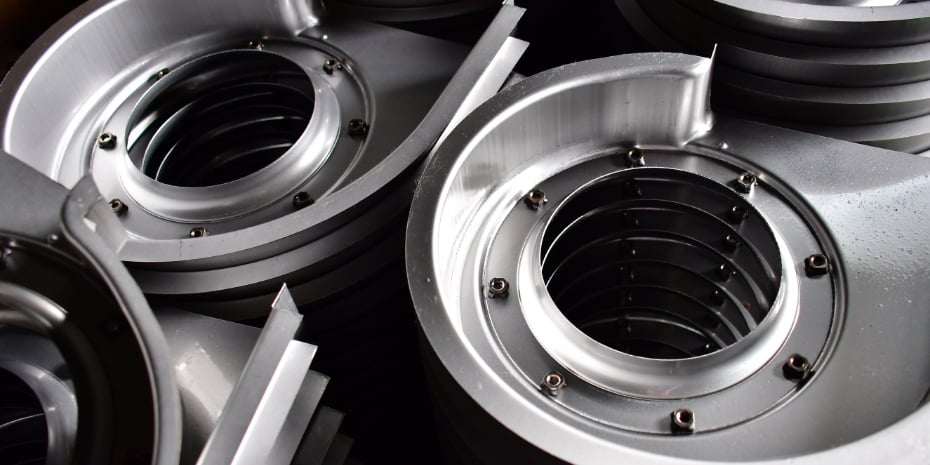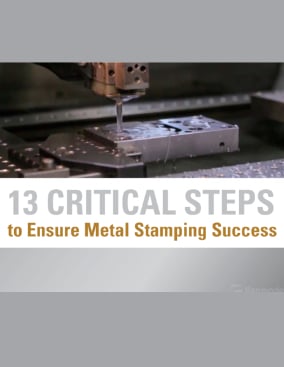Technology has become ingrained in our daily lives, making how we live, work and play easier and more enjoyable with each new innovation that emerges. Automation is no exception, as an area of technology that continues to evolve and make our lives exponentially easier. This is evident in our personal lives with automation responsible for things like smart homes, as well as in our professional lives with automation accelerating our work with incredible output. Let’s explore how automation is impacting the metal stamping industry by looking at the process of self-clinching fastener insertion.
What are Self-Clinching Fasteners?
A self-clinching fastener is a component that when pressed into ductile metal, transfers the host material to surround a mounting hole—causing it to flow into an annular recess in the shank or pilot of the fastener. The fastener is prevented from rotating in the host material when properly inserted, therefore becoming a permanent part of the panel, chassis, bracket or other item where they were installed.
In layman’s terms, self-clinching fasteners are used to attach components to thin sheet metal and provide connections that are capable of withstanding considerable force. Nuts, studs, spacers and standoffs are examples of self-clinching fasteners, which are leveraged across the automotive, medical devices, aerospace, and electrical industries. They are the preferred attachment method for sheet metal designers and assemblers. A common usage of self-clinching fasteners is in busbars, which are metallic strips typically found inside switchgear and panel boards to distribute power. Self-clinching fasteners will not loosen or fall out once installed, making them ideal in scenarios where loose fasteners could be lost or dangerous.
Automated vs. Manual Insertion
Regardless of the type of self-clinching fastener used, they all must be squeezed into place with a press or machine that provides the force necessary for proper installation. This can be done both manually or with automation.
Automated insertion leveraging automated presses is ideal for high volume installations, with the following advantages:
- They operate at rates five to six times faster than manual insertions
- Specifically designed to self-feed fasteners into punched holes with a parallel squeezing force, though not all fasteners need a pre-punched hole, some can pierce the metal simply using the fastener as the punch
- Incorporate the latest cutting-edge technologies to deliver high-level repetitive output that allows companies to compete in competitive industries and keep up with demand
- Reduces labor costs by creating considerable production efficiencies and faster assembly lines
- Enables the highest level of precision and consistency, eliminating human error and ensuring quality products
- Automated presses continue working until the job is done, while manual insertion requires breaks for the worker
- Detecting errors and inconsistencies—and correcting them—is part of the automation process
Manual insertion is used less often today, but remains a go-to process for many manufacturers when it comes to smaller installations. While there are advantages of manual insertion, such as human oversight of the process to catch any errors or issues, there are shortcomings of the process as compared to automated insertion:
- Using a manual press, a single fastener insertion takes on average 5.6 seconds to install
- Requires worker assistance, leading to starting and stopping of the process and thereby creating inefficiencies
- Can be inconsistent and lack precision due to human error during set-up as well as production
- Increases labor costs
- Slows down production and assembly lines
- Manual insertion is better suited for short runs or prototypes where automated insertions would be too expensive
In-Die Fastening
In-die fastening is a process that simultaneously combines metal forming and fastener installation into a single process, therefore creating both cost and worker efficiencies greater than automated fastener insertion alone. In-die fastening, which has quickly become the go-to process for manufacturers, provides the following benefits:
- Reduces stockpiles of parts between the metal stamping and fastener installation processes
- Reduces material handling and creates less scrap
- Enhances product quality
- Creates production and assembly line efficiencies
- Offers flexibility to reallocate the second machine operator to other needs
While in-die installation technology is most often used in progressive-die applications, additional applications include tandem press lines and custom production. Metal stampers can use this process to run a job without the need to invest in a new forming die.
Modern day technology is leveraged across insertion methods for self-clinching fasteners, whether done manually, automated, or with in-die fastening. However, the metal stamping industry has swayed strongly towards the automated and in-die technologies due to the efficiencies they provide. Learn more about the various options from your metal stamping partner, who will steer you in the right direction based on your specific needs


